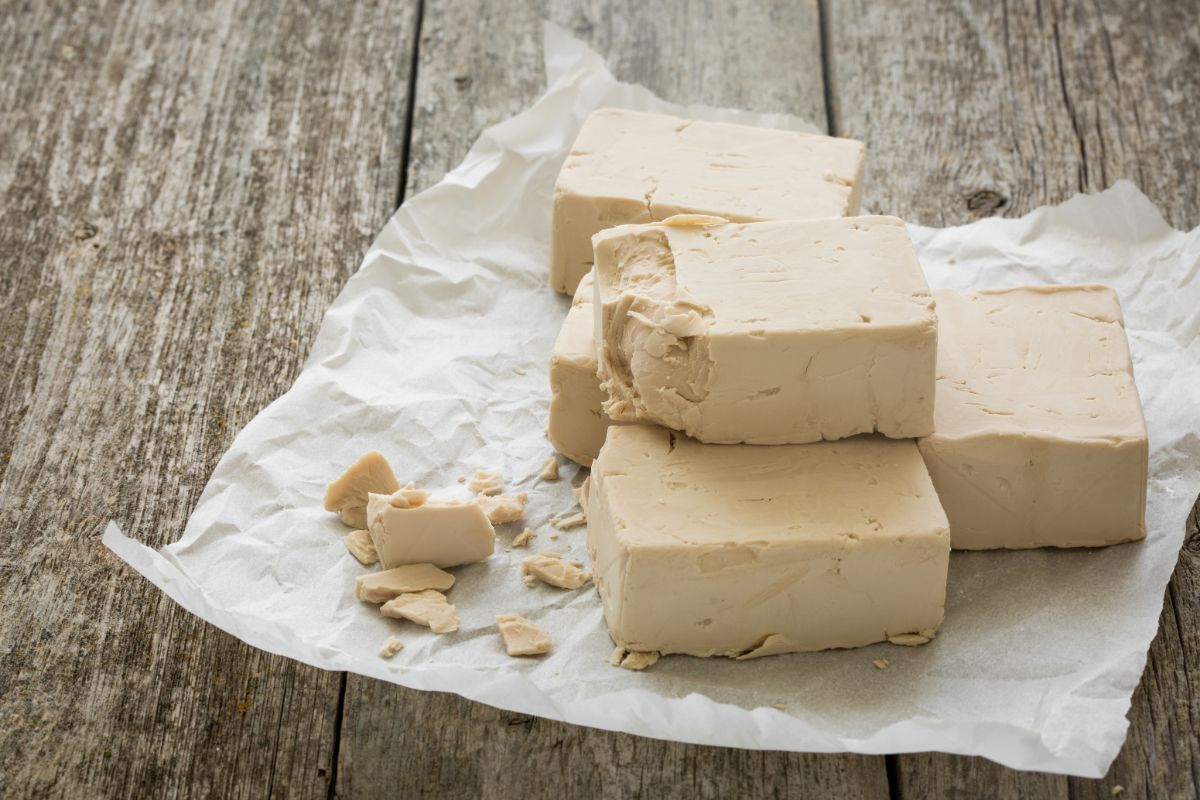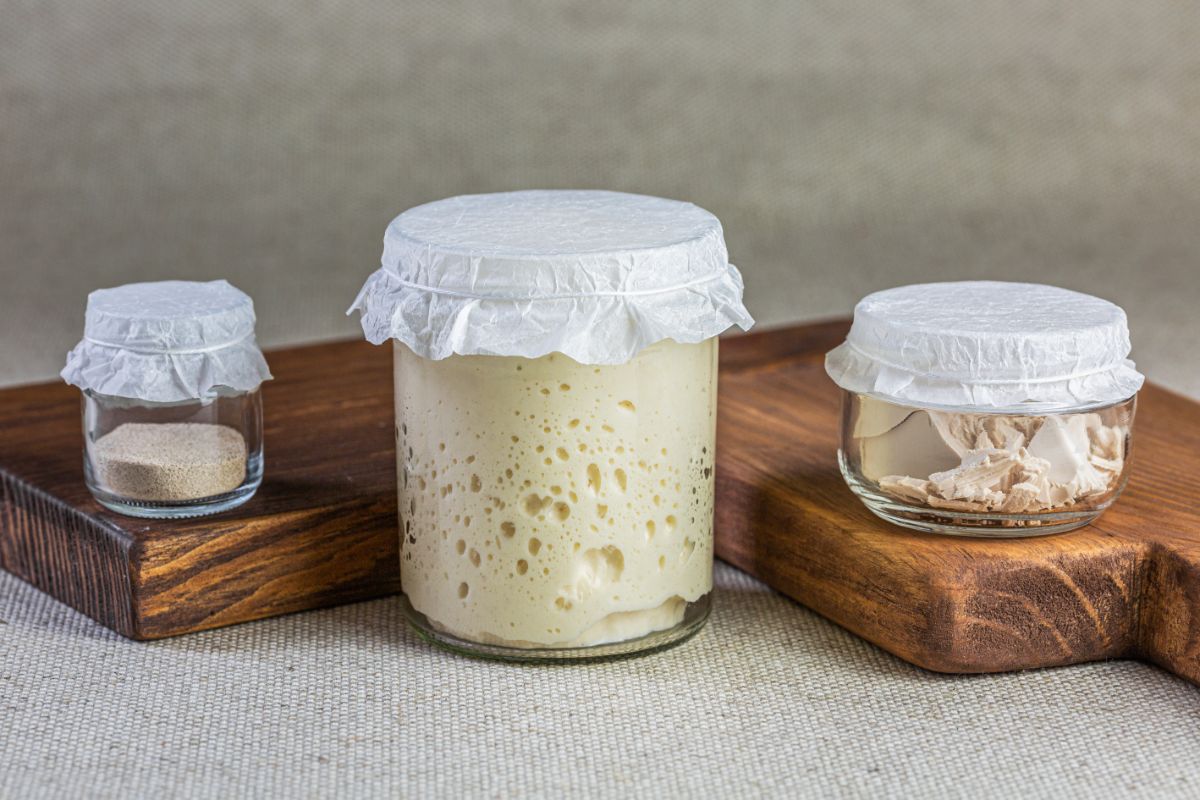If you’re a baking enthusiast, chances are that you buy more ingredients than is necessary. To avoid losing them, you should store the ingredients carefully.
So, does yeast have to be refrigerated? You have to refrigerate or freeze your yeast once the package is opened. Yeast is very perishable when exposed to air and room temperature. Before you store it, you should transfer it to an airtight container. Generally, refrigerated yeast has a shelf life of 4-6 months.

When you want to bake, you should remove the amount you need and refrigerate the rest. Freezing puts the yeast cells in a state of suspension. Dry yeast will keep fresh for months past the expiry date. And when you’re ready to use it, make sure it attains room temperature.
You may want to sprinkle room-temperature liquid to wake it up again.
When you open the yeast package, you should think about heat, air, and moisture. The first rule is to avoid introducing yeast to moisture. Don’t use a damp mixing spoon or measuring spoon.
Secondly, you should keep the air out. Put a lid on the container once you’re done with it. Yeast for everyday use should be stored in an airtight container. Make sure it’s enough to cover your baking for 2-3 weeks. Keep the remainder in a separate container.
Should you refrigerate unopened active dry yeast?
Dry yeast is used by home bakers and is commonly found in grocery stores. When unopened, it has a long shelf life. While the expiry date can vary, it’s uncommon for it to be more than two years.
You should keep the unopened yeast in the cupboard or pantry. You can also refrigerate the unopened yeast but you don’t have to. In the hot summer months, you should keep it in the freezer.
Dry yeast should not be exposed to liquids hotter than 110 degrees F after removing it from the refrigerator. This is because high temperatures can kill the live microbes.
If you have opened packages of dry yeast, you should fold them down to the level of yeast. This allows the excess air to escape. Use a small clip or tape to secure it in place. Make sure you label the expiry date before you place it in the refrigerator.
Testing yeast after refrigeration
If you’re not sure whether the yeast is active, you can perform a simple test. Dissolve one tsp. of sugar in a half cup of warm water and then add two tsp. of yeast. After a few minutes, it will absorb water and begin to rise. The yeast will bubble and fill the cup. Although yeast comes with storage instructions, you should perform a yeast freshness test.
Should you refrigerate fresh yeast?
Fresh yeast is sold in the refrigerated section of supermarkets. This type of yeast is pale gray-brown and is a good choice for bread that requires a long rise. When you buy the amount you need, you should place it in the fridge.
Be sure to use it within two weeks. If you spot mold growing on the surface, discard it immediately. To proof freshness, avoid placing the yeast in tepid water. Also, it should not get into contact with salt or sugar. When fresh yeast exceeds 14 days, you should discard it.
Can you refrigerate instant yeast?
Instant yeast has smaller granules compared to dry yeast and doesn’t need to be hydrated before mixing with flour. Once you open the package, you should refrigerate the remaining yeast. If the package is intact, you can store it in a cool dry place.
Refrigerator effects on yeast

Yeast becomes perishable once it’s exposed to heat and moisture. That’s why you should place it in an airtight container. If you keep the jar open, the moisture will get into the container and compromise the lifespan of the yeast.
While it will still be active, be sure to test for proof before you use it. Yeast contains microorganisms that generate carbon dioxide to allow the bread to rise. In most cases, yeast is sold dry to reduce the risk of mold growth.
To maintain it in this position you should keep it in a cool, dry place. This will ensure you maintain it for a couple of months after the manufacturing date. While in this state, the microbes lie dormant.
If you keep yeast for too long, the live microbes will eventually die. A refrigerator will delay the degradation of the product. For long-term storage, you can place it in the freezer. That way the live micro-organisms won’t die. They will remain dormant until you’re ready to bake.
How can I tell the yeast in my refrigerator has gone bad?
When yeast goes bad, it crumps together forming a solid chunk. You’ll also notice signs of discoloration if it has gotten too old. Also, it will change from grey to dark brown and produce a mold-like odor.
If the yeast is unopened it should last up to 12 months when refrigerated. It’s still safe after the expiry period. Because it’s hard to tell whether the yeast is usable when you look with naked eyes, you should test whether it’s still active.
Keep in mind that spoiled yeast comes with many health problems. If you have opened packs of yeast, use them before the expiry date.
Refrigerating yeast dough
If you love baking, you’ve probably used yeast. To enjoy fresh-baked bread, you should prepare dough early in the day. Make sure you add more yeast than what is in the recipe instructions. It will compensate for the one that dies off during the freezing process.
When you refrigerate yeast dough, the bread stays edible for a long time. Before you place the dough in the refrigerator, you should cover it with a plastic bag. The yeast will work on the dough until you return to your bread making.
Make sure you punch the dough down to ensure there’s enough warmth to allow it to rise. When it cools down, you should check it after 12 hours. If the yeast dough doubles in size, punch it down and allow it to sit in the refrigerator for a couple of days.
Conclusion
There’s nothing more frustrating than getting ready for baking only to realize that your yeast has expired. Because yeast is a living thing, you should store it properly. If you have dry yeast, be sure to keep it in the refrigerator to extend its lifespan past the expiry date.
On the other hand, fresh yeast should be stored and used within two weeks. It’s recommended that you transfer yeast in an airtight container before storage.
